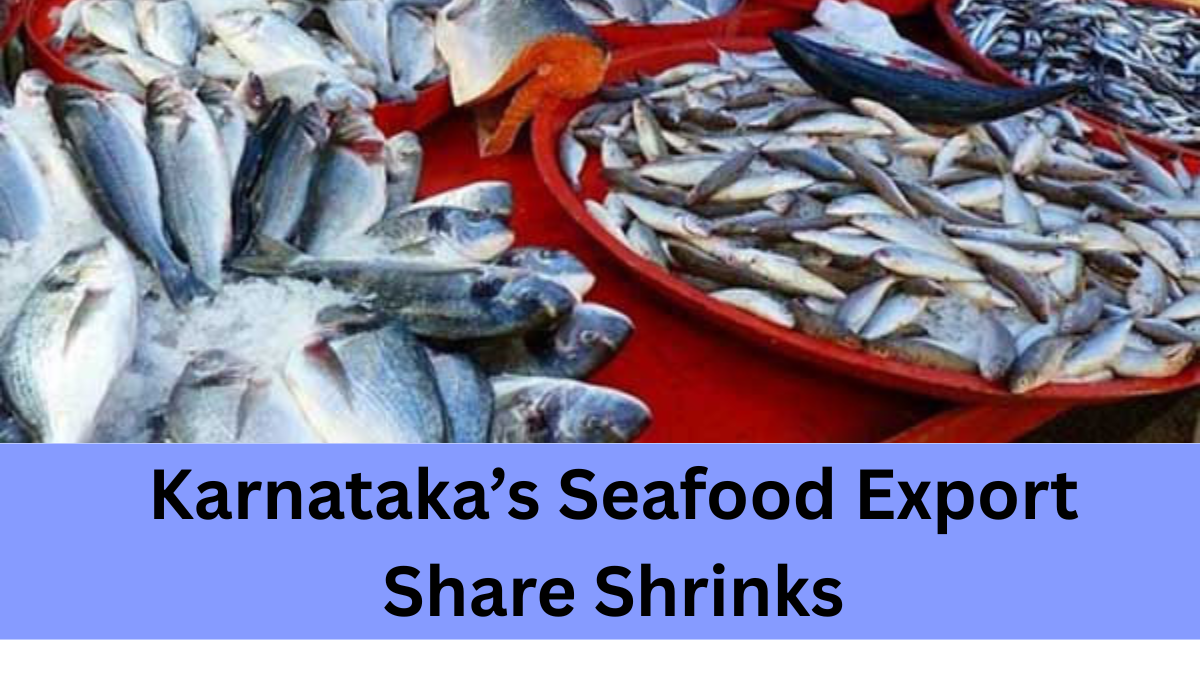Karnataka, once a strong contributor to India’s seafood export sector, is now grappling with a steep decline in marine fish catch. This downturn has led to a notable dip in its share of seafood exports, causing concern among stakeholders in the coastal economy. A mix of climate factors, overfishing, and regulatory challenges are behind this disruption, threatening both livelihoods and economic output.

Marine Fish Catch Drops
| Key Point | Details |
|---|---|
| State | Karnataka |
| Issue | Drop in marine fish catch |
| Impact | Decline in seafood export share |
| Causes | Climate change, overfishing, regulations |
| Affected Districts | Dakshina Kannada, Udupi, Uttara Kannada |
| Official Export Data Source | Marine Products Export Development Authority (MPEDA) |
Declining Marine Catch and Its Implications
Karnataka’s coastline, stretching over 320 km, has long supported a vibrant fishing industry. However, recent data shows a consistent drop in marine catch, particularly in key species such as mackerel, sardine, and pomfret. Fishermen in regions like Mangaluru and Karwar report fewer fishing days and lower yields per trip. This is directly impacting the quantity and quality of seafood processed for export.
The Marine Products Export Development Authority (MPEDA) reported that Karnataka’s contribution to India’s total seafood exports has dipped from around 7% to below 5% in the last fiscal year. The sharpest declines were seen in frozen fish and chilled seafood, which were traditionally Karnataka’s strengths.
Factors Behind the Decline
Several interlinked issues are contributing to this decline:
Climate Change: Rising sea surface temperatures are affecting fish breeding cycles and migratory patterns. Unpredictable monsoons and extreme weather events are also limiting safe fishing windows.
Overfishing and Depletion: Inshore waters have been overexploited due to the use of destructive fishing gear and minimal regulatory enforcement. Juvenile fish are being caught prematurely, undermining stock replenishment.
Pollution and Habitat Loss: Coastal industrial activity and untreated sewage have led to habitat degradation. Coral reefs and estuaries, essential for fish nurseries, are under stress.
Regulatory Challenges: The implementation of seasonal fishing bans and limitations on mechanized boats, while ecologically sound, have limited the fishing window without providing viable alternative livelihoods during the off-season.
Impact on Seafood Exports
Karnataka’s seafood processors are struggling with supply shortages. Plants are operating below capacity, leading to rising costs and reduced competitiveness in international markets. Exporters are shifting sourcing to states like Kerala and Andhra Pradesh, further marginalizing Karnataka’s presence.
Seafood exports are a vital foreign exchange earner. With global buyers demanding consistency and quality, Karnataka’s faltering output risks long-term reputational damage. Exporters note a drop in orders from the European Union and Middle East markets.
Effects on the Local Economy
Fishing supports over 3 lakh people directly and indirectly in Karnataka. The ripple effect of the marine catch drop is felt across communities—from fishers and processors to transporters and ice suppliers. Coastal markets are experiencing inflation due to reduced supply, affecting local consumption as well.
Youth in fishing communities are increasingly turning away from the sector, citing unstable income and lack of long-term security. This generational shift could worsen the manpower shortage already seen in fishing and allied industries.
Steps Being Taken
The state government and fisheries department are exploring several interventions:
-
Promoting deep-sea fishing with modern vessels to reduce pressure on inshore stocks
-
Strengthening enforcement against illegal and destructive fishing practices
-
Expanding aquaculture and inland fish farming to diversify seafood production
-
Collaborating with marine scientists to monitor fish stocks and ocean health
However, experts argue these measures need better implementation, funding, and local buy-in to deliver meaningful results.
FAQ
What species have seen the most significant drop in catch?
Mackerel, sardine, and pomfret have seen sharp declines, especially during peak seasons.
How much has Karnataka’s seafood export share reduced?
It has dropped from approximately 7% to under 5% in the latest fiscal year, according to MPEDA.
Which districts are most affected?
Dakshina Kannada, Udupi, and Uttara Kannada are facing the brunt of the crisis.
Is aquaculture helping offset the losses?
Not significantly yet. Aquaculture in Karnataka is still underdeveloped compared to other states like Andhra Pradesh.
What long-term solutions are proposed?
Deep-sea fishing, stricter regulations, habitat conservation, and expansion of inland fisheries are among the proposed solutions.
Click here to know more
